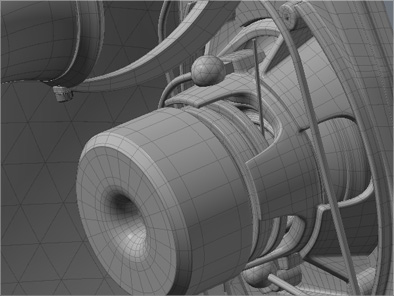Product visualization work usually begins with a few key questions - does the physical product exist and, if so, what techniques are best suited to both the subject matter and project goals. Photography can often be preferable to CGI for highly detailed shapes and/or transparent, refracting materials which can be time consuming to replicate in 3D, although many other factors can play into a final decision. While the Harman Kardon GLA-55 speakers contain all of the above physical characteristics, CGI was ultimately chosen due to the availability of CAD data and the interactive component of the job. Retouching photography to eliminate reflections of studio equipment such as cameras and lights, subtle manufacturing imperfections and unwanted shadows can quickly become prohibitive when producing large numbers of frames for animation. Because cameras and lights in CGI can provide illumination without any physical appearance, generated images are inherently extremely clean and typically require little, if any, post processing.  Process While CAD geometry is rarely suitable for rendering directly, it can serve as a template from which to build a new, clean model. Because so many components of the GLA-55 were made from transparent materials, even the smallest details such as seams, joints, mounting tabs and structures needed to be recreated to accurately reproduce all the refractions and reflections that are inherent in the physical object. We painstakingly rebuilt the model, inside and out, to produce geometry that was both optimized for rendering and efficient to work with. Polygon density, notoriously high in CAD geometry, was significantly reduced, keeping detail only where needed. Once modeling was complete, surface attributes were applied and a 3D environment was created to best accentuate the unique properties of the product.  Result Although the modeling process required an initial investment in time, this was more than offset by eliminating the costly process of retouching large numbers of photographic frames. The same 3D assets can be used to produce both high resolution print images as well as animated sequences for product display and promotional materials with little to no post processing. Additionally, future uses of the assets would not require the initial build time, thus providing greater flexibility and cost effectiveness. |

|
|||||||
 |
||||||||
| Address Chris O'Riley 306 Briarwood Ct. New Paltz, NY 12561 |
Contact Chris@Chris3D.com tel (845) 256-8934 |
News Be sure to check out our physical models here and here. We can now create physical objects in a variety of materials - wood, plastic or metal. |